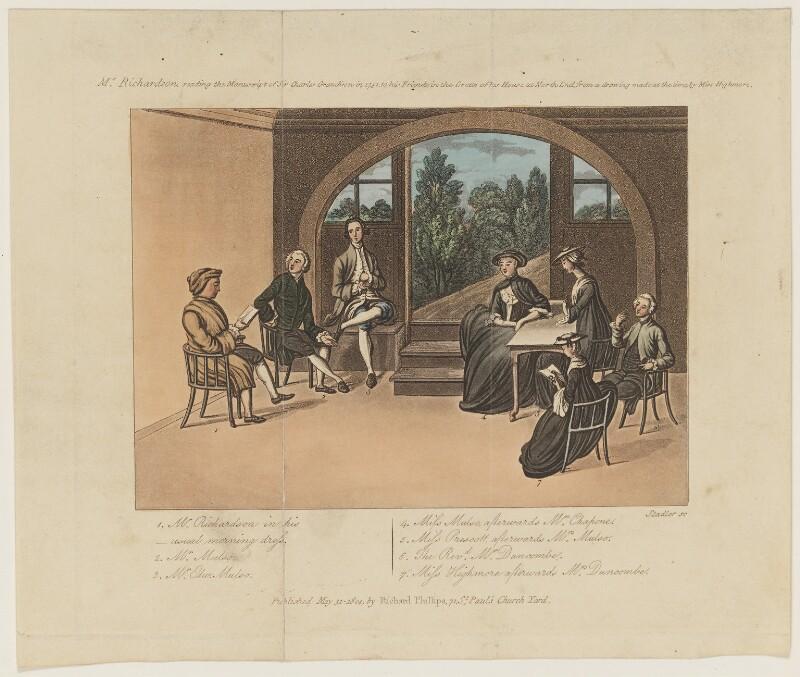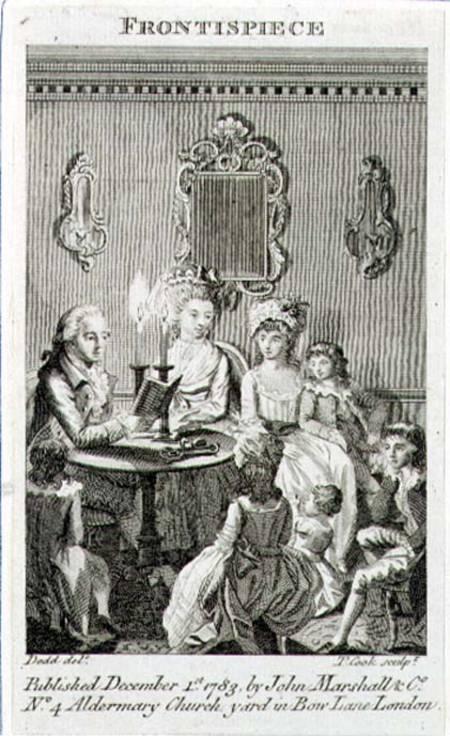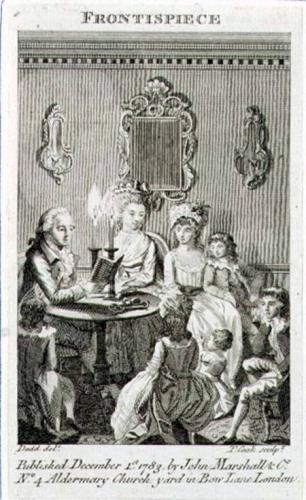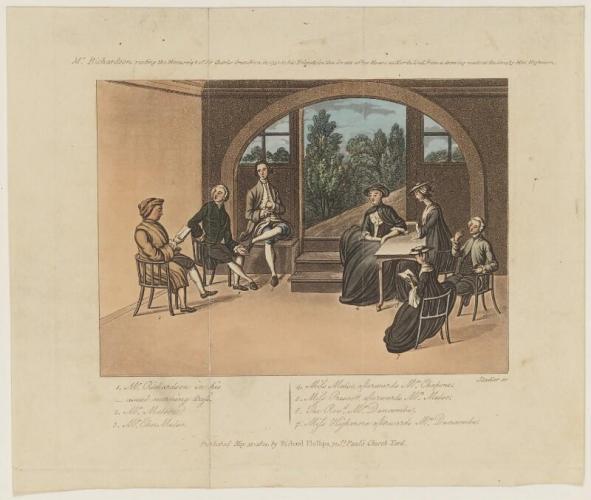Abstract
In the eighteenth-century, reading was often regarded as a collective activity of social significance. In many ways, the diversity of reading practices led to collective, sociable enterprises and generated lively exchanges between readers. This private, domestic practice also developed into public, scientific readings, at a time when the organization of society as a whole relied more and more on rising levels of literacy.
While reading might be seen as a solitary act of perception, contributing to the construction of individual notions of subjectivity, consciousness or identity, there are many reasons why reading should also be viewed as a collective activity of social significance. The proliferation of various official or informal associations revolving around books (academies, circulating libraries, clubs, societies, etc.) running parallel to the intensively growing market (print, book-sellers), testifies to the rising social role and collective power of this seemingly private practice. Reading certainly was at the heart of the eighteenth-century enlightenment and was not only tied to the rising levels of literacy but also encouraged various forms of communication and interaction, including the feeling of being part of a wider network of beliefs and world-views, sensitivity and empathy.1
- 1. The transition from manuscript to print media over the course of the long eighteenth century contributed to the spread of the existing textual conventions and their transformation, with letters (a reading-writing form of communication) playing a vital role in familiarizing the growing audience with such new printed media like novels, biographies or newspapers and periodicals. See Rachel Scarborough King in Writing to the World: Letters and the Origins of Modern Print Genres (Baltimore: Johns Hopkins University Press 2018).
Various reading practices
Although the growing popularity of the novel caused a real outpour of books into both private and public spaces, reading should not be viewed as an activity connected solely to literature or associated simply with texts intended to stir up the imagination (e.g. fiction or poetry).2
In fact, people read various texts – from newspapers (political, cultural, social) to practical messages (street names, road- or shop signs) – and for various purposes (didactic manuals, self-improvement books, chapbooks), including religious or spiritual goals (with the rise of literacy from the seventeenth century through Protestant beliefs in the importance of being able to read the Bible). Irrespective of conceptualizing reading as either a rigorous practice, with readers repeatedly returning to the same volume or texts to understand them thoroughly, or as wide-ranging yet often superficial one (especially when we think about large libraries or collections of great numbers of works accumulated by wealthy individuals), its effects more often than not resonated in sociable interactions, such as letter writing, coffee house discussions or club meetings. In some cases, the shared social aspect of reading was so strong that it easily dominated over the individual and solitary act, for instance in some of the book clubs, particularly those popular with men. These were places where talking, drinking and other forms of conviviality almost totally overshadowed the practice of reading, as suggested by the 1788 satirical poem ‘The Country Book Club’ authored by Charles Shillito:
Thus, meeting to dispute, to fight, to plead,
To smoke, to drink—do anything but read—
The club—with stagg’ring steps, yet light of heart,
Their taste for learning shown, and punch—depart.3
- 2. See Mihaela Irimia, ‘”…these foolish, yet dangerous Books”: Fashionable Sociability and the Circulating Library in Classic Modernity’ in East-West Cultural Passage (1/2016), pp. 9-35.
- 3. The book-club had already started evolving in that direction in the early 1700. See Sarah Laskow, ‘Even in the 1700s, Book Clubs Were Really About Drinking and Socializing’, June 26, 2017, www.atlasobscura.com/articles/1700s-book-clubs-drinking-socializing [Accessed 10 April 2022].
In the early eighteenth century, the social category of the ‘enlightened’ was also synonymous with readers in general and proficiency in this activity served as a status symbol. However, this somewhat elitist group, encompassing the wealthy, avid practitioners who in one way or another communally ‘shared and debated their reading both in private and in print’,4 was quickly watered down with the skyrocketing literacy rates which brought the skill to the lower ranks of the social ladder. Within the Anglophone world, it was the bourgeois household that registered the traces of the importance of the reading ritual – with silent, enclosed spaces intended for the practice of studying books like private libraries or special chambers. Although such households were equipped with special places for the private consumption and interpretation of texts, reading would very often take place in sitting rooms or parlours allowing for a more sociable dimension of the whole experience. Additionally, already at the beginning of the long eighteenth century, various female members of a given dwelling (mothers, labourers’ or artisans’ wives) often ‘acted as village schooldames’ in places like Cambridgeshire, Leicestershire or Kent for poor children who ‘acquired the skill by the age of five or six’ (Bannet 122).
- 4. Eve Tabor Bannet, ‘History of Reading: The long Eighteenth Century’ in Literature Compass 10/2 (2013), p. 124
Collective reading
Although many people mainly read at home, the activity proved to be more a collective than an individual enterprise. The most obvious instance of sociable reading would be that of a member of the family reading to the whole family around the fire or any other source of light (candles) as a choice moment of collective leisure. Such a situation can be seen in the following 1783 frontispiece on which a father is reading a book to a family comprising his wife (in the background) and six children.
Moreover, many letters of the period reveal that a book reading performed by a member of the family would often take place while members of the household were involved in other activities of various types, most notably when children were playing or when women were working. For instance, in 1785, the bluestocking Frances Boscawen recommended James Boswell’s Tour of the Hebrides as an excellent book to listen to while doing knotting work.5 The circle of attendants very often extended to non-family members, one-day visitors or friends staying with the family for a longer time period. The elderly were often read to as well: the diary of the courtier Mary Hamilton is full of references to the fact that the aging Mary Delany and her companions asked their visitors to read the newspapers or other texts (letters, poems…) to them (Llanover, 6: 173, 177, 181, 183, 196, 229). Eleanor Butler, one of the ‘Ladies of Llangollen’, recalls reading to Sarah Ponsonby, while her friend/partner was drawing, doing cross-stitch, or decorating her journal.6 The practice of collective reading was also frequent in less favoured social categories: the servants of wealthy families or apprentices in towns occasionally took turns to read to their counterparts when they were working.7 Thus, reading was conceived as collective entertainment that provided a reduced circle with food for thought and conversation.
- 5. The Hon. Mrs. Boscawen to Mrs. Delany, in The Autobiography and Correspondence of Mrs. Delany, ed. Lady Llanover, 6 vols (London: Richard Bentley, 1861-1862), vol. 3, p. 296.
- 6. The Hamwood Papers of the Ladies of Llangollen and Caroline Hamilton, ed. G. H. Bell (London: Macmillan, 1930), pp. 58, 61, 66.
- 7. Abigail Williams, The Social Life of Books: Reading Together in the Eighteenth-Century Home (New Heaven and London: Yale University Press, 2017), p. 44.
Although the ‘images of families reading together in groves and grassy banks that adorn the frontispieces of eighteenth-century books may romanticize the outdoor scene’, the practice of reading en plein air can likewise be connected to more down to earth reasons – ‘heavy taxation on both glass and candles’ during the time (Williams 62). Such straightforward economic or political regulations of both the public and the private spheres certainly had a direct impact on the forms of reading and social interactions involved. Nevertheless, the implicit assumptions about the citizens’ ability to decipher the reading material they confronted (in the form of street- or roadsigns) also gesture towards other assorted rules for ‘civilized’ forms connected with reading, including its possibly dangerous, licentious, political uses. In fact, people literally read everywhere, even in the most unexpected places, including coaches or even on horseback, as described in several places in Pepys’s diary in the last decades of the seventeenth century:
[…] so we set out for Chatham: in my way overtaking some company, wherein was a lady, very pretty, riding singly, her husband in company with her. We fell into talke, and I read a copy of verses which her husband showed me, and he discommended, but the lady commended: and I read them, so as to make the husband turn to commend them. (Diary, vol. VI, 182).8
Thus people were making the most out of the activity’s immersive aspects, inside but also outside of their homes.
- 8. For other instances, see Diary (London: George Bell and sons, 1893), vol. 5, p. 306; vol. 8, p. 313; vol. 9, p. 213.
Readers’ returns
The propensity of readers to identify with the characters or the emotional content of a fictional text was a frequent cause of controversy surrounding reading in the long eighteenth century. On the level of content this was obviously connected with the potentially dangerous political or social ideas conveyed through the reading materials (pamphlets, novels, etc.), but there were also more contentious aspects concerning ‘mere’ fiction. These become clear when we think about the domain of morals and reading’s tendency to foster most intimate forms of experience, affect and connection.9 Some of the most popular epistolary novels of the time, from Richardson’s Pamela: Or, Virtue Rewarded (1740), Clarissa (1748) to Frances Burney’s Evelina (1778), apart from displaying the action and characters’ through exchanges in a letter form, additionally documented modes of social formation and the instilment of ‘proper’ values. Thus, their didactic content was accompanied by implicit disciplining outcomes, introducing the expected functioning of reading procedures or literary communication and interpretation which were to effect a conduct based on the reproduction of the desired social attitudes.
- 9. See Kathleen Lubey, Excitable imaginations: Eroticism and Reading in Britain, 1660-1760 (Lewisburg: Bucknell University Press, 2012).
Nowhere else was such a policing role of reading more visible than in the collective domestic act, regardless whether it concerned letters, which often ended up being read out loud, or the more domesticated, familiar texts repeatedly delivered orally to the household members. The sociability of such a reading context, including the presence of authority figures, would successfully act to cement the customary reaction and interpretation while at the same time discouraging any emotional or subversive outbreaks. As Catherine E. Kelley points out, reading was one of the key elements in the formation of proper young ladies within the literary practices of eighteenth-century women, which included seeing the ‘sophisticated and discerning’ manner of reading aloud as an accomplishment, along with music, dance, conversation, needlework, and other ‘polite practices’.10
- 10. Catherine E. Kelley, 'Reading and the Problem of Accomplishment', in Reading Women: Literacy, Authorship, and Culture in the Atlantic World, 1500-1800, ed. H. B. Hackell and C.E. Kelley (Philadelphia: University of Pennsylvania Press, 2008), pp. 124-150, p. 125.
From readings to lectures
The practice of collective reading was also used by some authors who were desirous of testing their writings in front of an audience, even sometimes prior to publication. Such was the case, in particular, of Samuel Richardson, who enjoyed reading his own novels to a circle of close friends including several women, as represented in Susanna Highmore’s drawing below.
The novelist relied on the immediate comments or later correspondence (many letters and long, endless debates) of his readership (above, from left to right, are Richardson, Thomas Mulso, Edward Mulso, Hester Mulso, Susanna Highmore, Sarah Prescott, and John Duncombe) to adapt several traits of his characters’ personalities.11
If questions of authorship and publicization were at stake, the public lecture paved the way to literary practices well beyond the eighteenth century. The advent of scientific experimentation, with the birth of the Royal Academy in 1660 and the Philosophical Transactions in 1665, led to the dissemination of science through lectures. The Royal Society lecture series began in 1738 and that of the Royal College of Physicians in 1749. Thus, scientists and a larger audience became informed of the improvements of science through collective, public readings.
- 11. See Betty A. Schellenberg, Simon Fraser, Literary Coteries and the Making of Modern Print Culture, 1740–1790 (Cambridge University Press, 2016), chap. 1, and Alain Kerhervé, Mary Delany (Paris: L’Harmattan, 2004), pp. 147-150.
At the same time, a less scientific public gathered in the spouting clubs or assemblies of the City of London where tradesmen, merchants and apprentices formed amateur societies desirous of learning to read well for which collections of verse and prose were provided, such as The Spouter’s Companion (1770) or The Sentimental Spouter (1774).12 Whilst the people gathering in the spouting societies were almost exclusively concerned with the process of oral delivery, the book clubs combined the collective sharing of books bought by individuals with sessions in which their members could discuss the books they had read.13 The members of those different clubs usually met in public houses, coffeehouses or inns.
- 12. The Public Advertiser of 5 September 1764 recorded some messy spouting: ‘One Day last Week, while some Members of a Spouting Club, not far from Temple Bar, were exhibiting their talents to a large Audience, a Top Genius, in the last Scene of Barbarossa, had like to have concluded his Part rather too tragically, for, transported with all the Fire of the Person represented, he could not wait to be harmlessly assassinated, but threw himself upon his Antagonist’s Dagger, which being a real one, and very sharp, penetrated thro’ his Waistcoat and Shirt, and drew Blood; the sight of which, in an Instant, dispell’d the fumes of Enthusiasm, and from an Indian Prince he sunk into his original Character, that of a Journeyman Barber’.
- 13. Allan, David, Commonplace Books and Reading in Georgian England (Cambridge : Cambridge Univ. Press, 2014), p. 53. Also see Charles Shillito, The Country Book Club: A Poem (London, 1788).
Reading the social landscape
Reading was also taken outdoors into the streets or roads of Britain with the use of street names and roadsigns that helped people locate certain places and related activities (Frying Pan Alley or Haberdasher Street) and more globally to better understand their individual relation to the larger collective organisation of the city or country. If the official mapping of Britain was only organized from 1791 in an Ordnance Survey, John Ogilby’s Britannia had opened the way for the modern road map, in 1675, followed by such works as Britannia depicta or Ogilby improv'd (1721) by John Owen and Emmanuel Bowen’s, or John Cary’s The New and Correct English Atlas published in 1787, without forgetting John Rocque's 1746 map of London and many other local and regional enterprises. The local, regional or national maps confirmed the importance of reading to people’s capacities to understand how they were part of their environment and how they related to other people in other places. The shop signs constituted another facet of that aspect: although they had a long history, their size started to be reduced towards the turn of the eighteenth century, with more text replacing the large pictorial boards of the sixteenth and seventeenth centuries. The numbering of houses began to be introduced in the early eighteenth century in London, ultimately turning the town into a text, which was more accessible to the growing groups of literate people. In this sense, apart from the simple kinetic sensation of movement, the very activity of crossing a town or a city meant an interaction with a textual environment which pointed to the omnipresence of reading.
The sociable dimensions of reading rest not only on the democratic impulses connected with the spread of information and ideas but are likewise linked to the transformations of the reading public. In the long eighteenth century, reading was not only a solitary intellectual process but an activity which, like human experience in general, was imbricated in disparate relationships, willingly communicated and negotiated with other members of the society. The transformations in the habits connected with reading as well as the rapid rise in literacy and the subsequent growth in numbers of actual readers allow us to see the Enlightenment as the root of many modern and sociable practices connected with books, writing and communication.
Share
Further Reading
Prendergast, Amy. Literary Salons Across Britain and Ireland in the Long Eighteenth Century (Basingstoke : Palgrave Macmillan, 2015).



